https://www.youtube.com/watch?v=wo-o5K4wnPs
Rock _ Blues Rhythm Guitar Lesson (Key of A)
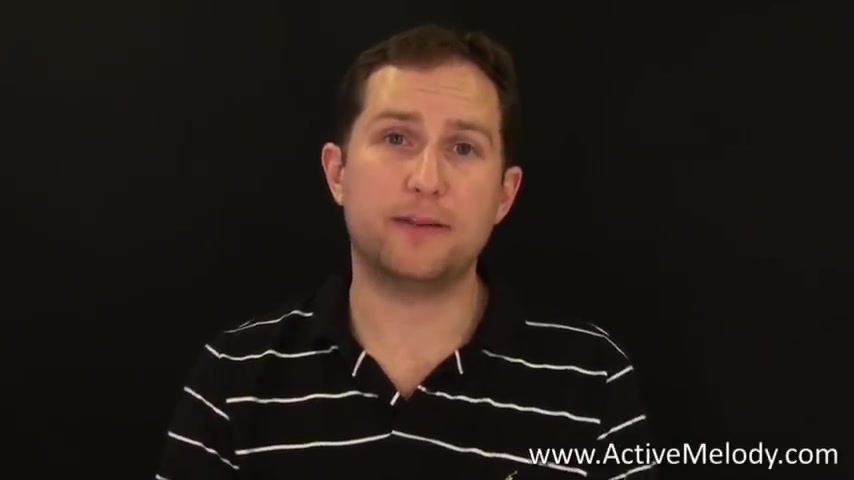
And what I'm doing there for that is I'm just playing the middle G string and the B string , open a hammer on to the first fret G string for that note , which in essence is making it cool to think about it .
Then I take my middle finger and go ahead and borrow that second Fred .
I'm making the A cord .
Now .
Obviously , I'm not making it the way that we learned it before because my uh my pointer finger is occupied .
So then I come back and then I close it with this upstroke , those top two strings .
So slowly it sounds like this .
And you may just want to practice doing that over and over again because that is something you use all the time when you're playing rock rhythm .
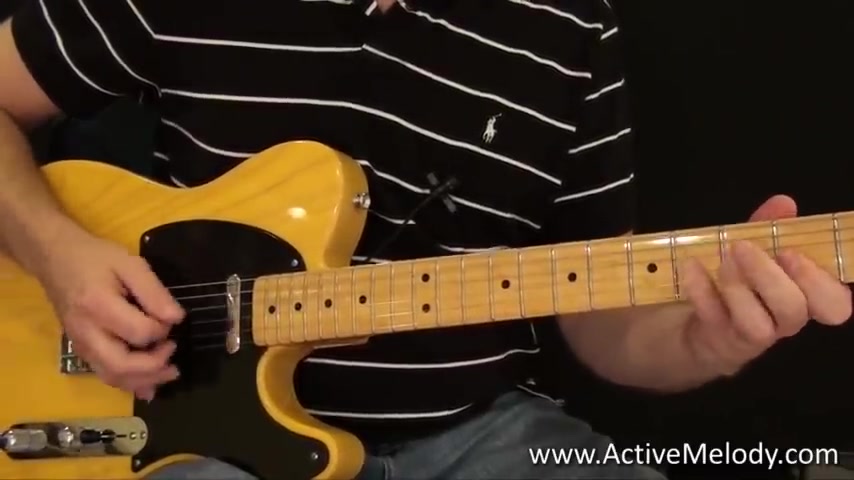
Now , before we get started , I'm just gonna play through a little bit of this rhythm by myself without the jam track .
And I want you to watch my right hand and watch the , the strum pattern that I'm , I'm repeating over and over again in particular .
So what I'm doing there is I'm creating a rhythm that looks like this over and over again .
Now I recommend you practice before you even start worrying about the left hand and what's going on with that .
Most people always make that mistake .
You always , people try to always learn what's going on with the left hand .
And , um , that's important , but sometimes it's more important to get the right hand down and in a rhythm like this , the right hand is what's gonna make this thing .
That's what people are gonna stomp their feet to .
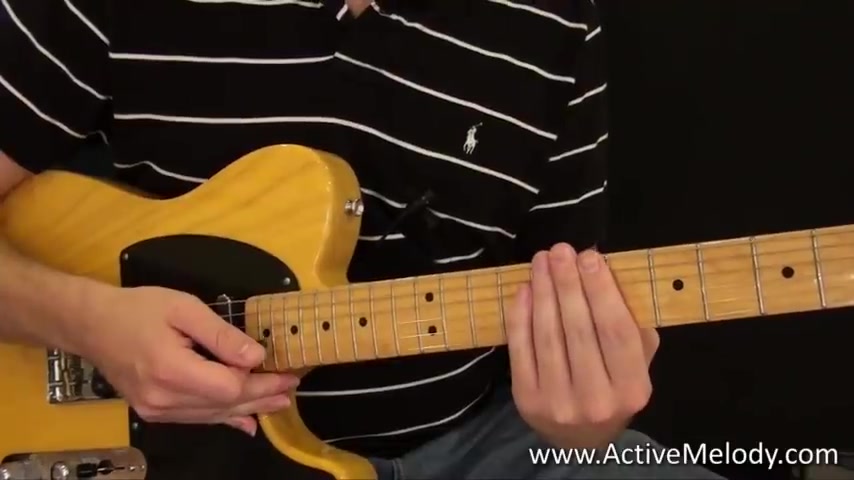
So , um , so what I'm doing is and I recommend you , you , you practicing it this way , kind of mute the strings just by resting your fingers on them .
So they don't make any noise and practice getting a rhythm like that .
Now , what I'm doing in that rhythm is I'm playing , I'm on one down stroke , I'm brushing across the middle four strings or so .
Now I'm not playing on this , this bottom E string or the six string .
I'm starting it on the fifth string or the A string and I'm just raking down once , then I'm coming back and I'm hitting just that a string .
So it's , it's all the strings then it's just the A string and both of those are downs strokes .
So it's downs stroke down , stroke , downs , stroke down stroke .
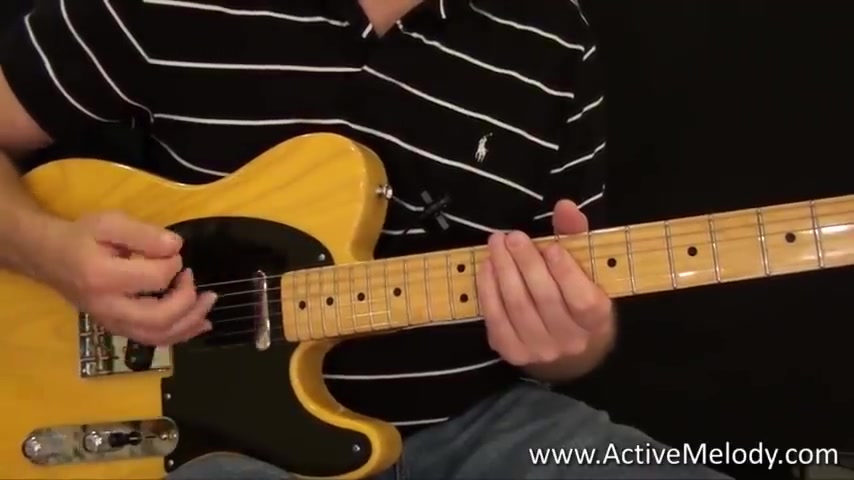
And so the , so that's what I would practice if , if I were you in the beginning is just doing a downs stroke , downs stroke , downs , stroke downs stroke just to get that down .
And it will be slow in the beginning .
But over time you'll be able to pick it up a little bit .
Tell us about this tempo and it , OK , so we'll get back to the right hand .
But now let's take a look at what the left hand is doing .
So , the first thing , uh , to point out is I'm playing an , a chord here , first quarter that I'm playing .
And the way that I do it is I just bar the second fret .
Um , I bar the first four strings and I play the middle four strings when I strum it with my right hand .
So I'm not playing the bottom E and I'm not playing the high , I'm just playing the middle .
That's one way to make an , a , some people make an A by cramming three fingers in that allows you to let the high E string uh ring out , but it's not very versatile for doing these kinds of rhythms .

So I recommend when you're playing rhythm , especially , you know , uh rock and roll or blues , you probably wanna bar your a like that .
So , what I'm doing is uh when I'm barring that I'm playing this little rhythm and by the way , the , the strings that I'm playing , I'm actually not playing all four , I'm just really playing string , which is the A string , the D string and the G string .
So I'm playing this , that's the first thing I do .
And what I'm doing there is I'm , we get to the right hand but with the left hand barring the second fret and I'm coming up to the fourth fret , fourth string , pushing down just that one string , releasing it .
So , and you've heard that rhythm ?
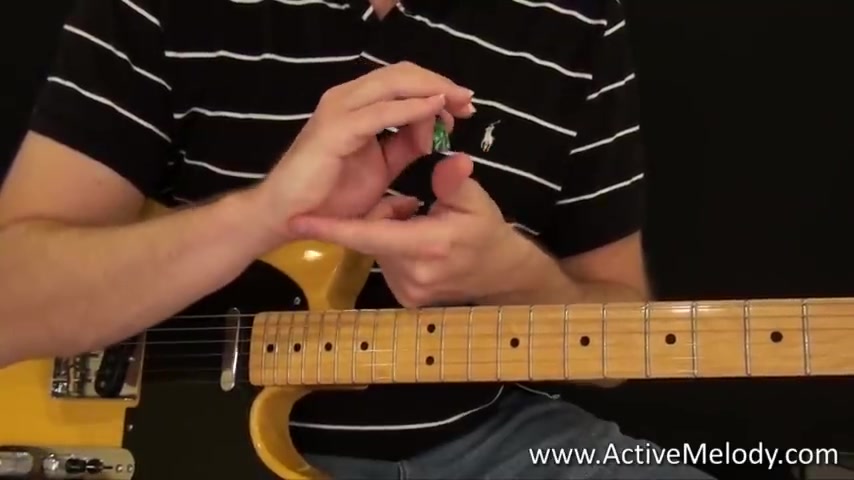
You , so that's , uh , that's , uh , what's going on with the left hand now with the right hand .
I'm actually , even though I've got that rhythm going that I showed you , I'm doing one other thing in conjunction with that and that's , I'm muting with my right hand .
So I'm letting this part of my hand kind of rest on the strings back here to give it that sound if you don't , it sounds like this .
So it rings out too much and by just resting your hand , you know , kind of towards the bridge back here and it gives you a much chunkier sound .
Now , you may want to practice that you can't go too far this way , you can't go too far towards the neck or it will completely mute the strings , but you got to pull it back until they're just , you know , like I said , it's just right there by the bridge .
OK .
So there , so that's what I'm doing with the right hand .
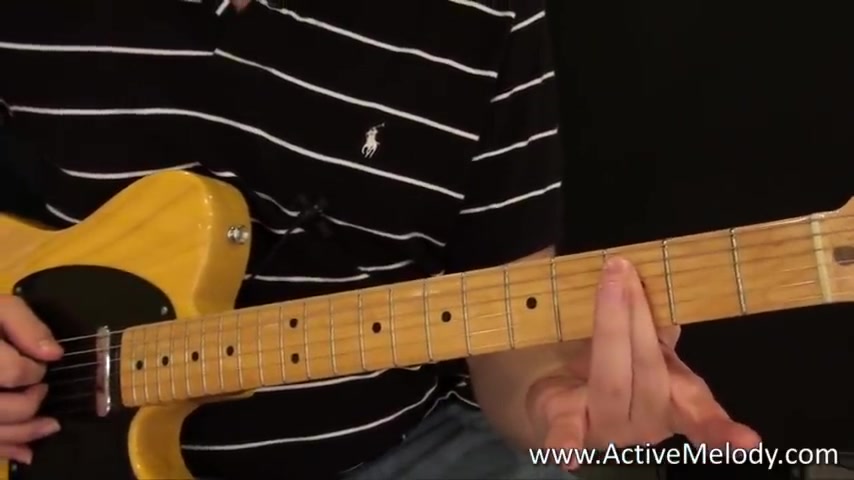
And so the , the left hand after I play this , play those two notes and what I'm doing there is I'm playing the uh third fret , uh fifth string , middle finger , then I'm playing the fourth fret , um fifth string with my ring finger or the eight string .
So , so it's all right .
So this with this D part again , I'm just playing the D string and the G string in the middle just , and I'm barring here the second fret , the , the top three strings , I'm just playing those .
Uh , you know , I'm just using one of those .
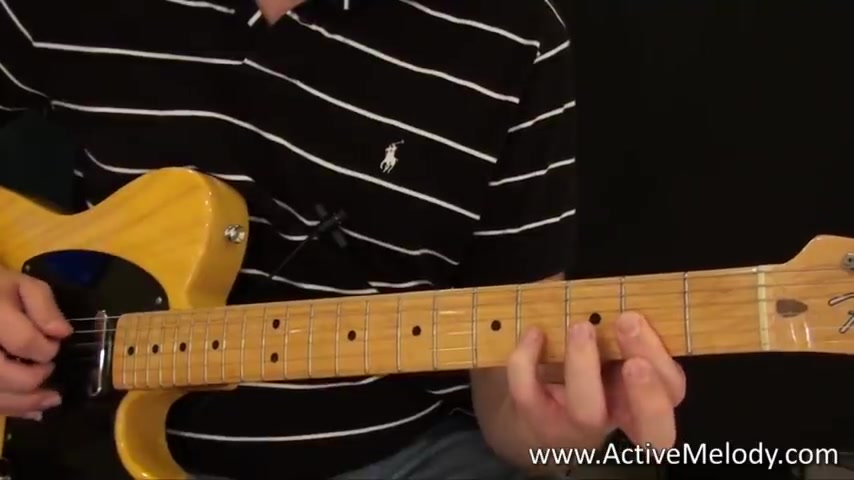
I'm actually just , technically I would just have to play the second fret , third string , but it's just easier to bar those since you're already barring them for the A But anyway , so I'll come up here .
I push down on the third string , fourth fret with my pinky to create that note .
Then I come up and stretch to the fifth fret , slide down back to the fourth , back to the second threat and then down to the fourth threat and on the fourth string .
So here's what the right hand is doing .
Notice I do an upstroke there on that , on that note .
So I go right there .
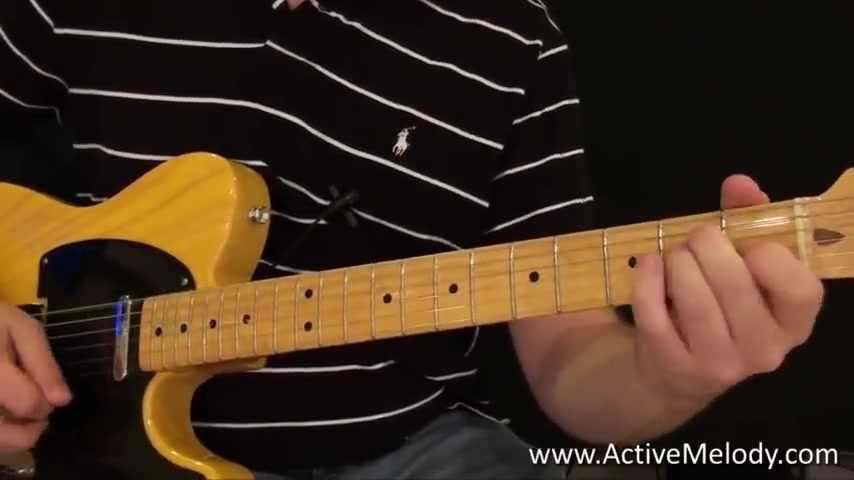
So it's down , then all that's left is to play the E part and we transition right out of the D .
So we go and to do that , we come down and play the uh fourth string on the second threat there .
So we go and then we hit the bottom .
So it was an octave there .
You're playing this high E and then you're playing the low E hit that , that gives you just enough time to free up your hand to , to go right into the position of the cord .
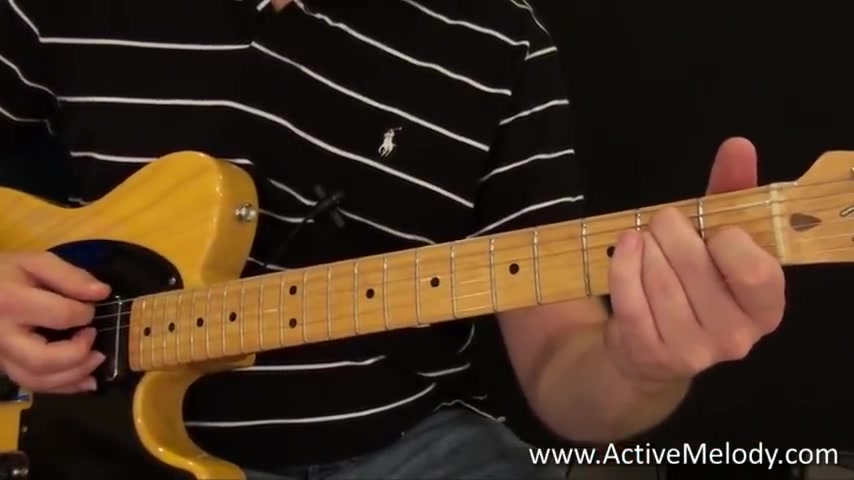
And for that what I'm doing is once I'm in position I'm , uh , hitting the bottom string , doing it with a , with a downs stroke and then hitting the top two or three strings with an upstroke .
So it's so it's down , down , down , up , that I notice I'm kind of palm muting those .
Uh , it's kind of a very , uh , top thing to do that maybe may have been where I got that from .
I don't know .
All right .
So then there's just this little tag at the end that goes .
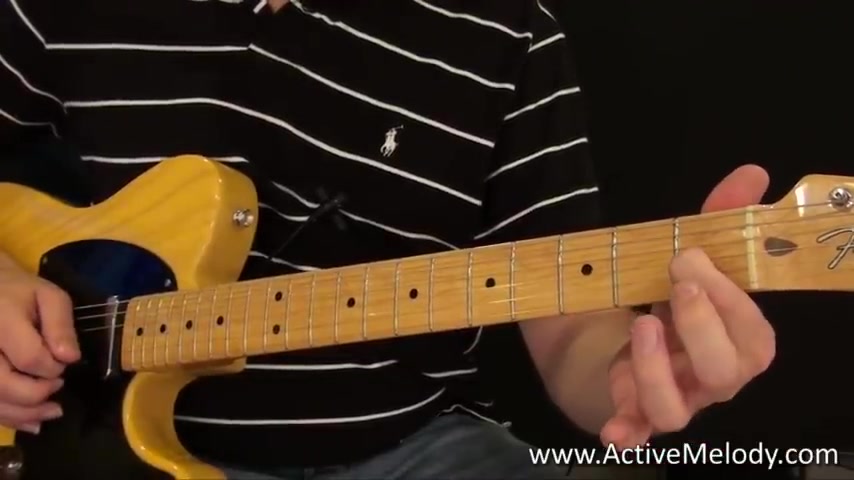
Let's say we were playing in the key of a major , the a major scale therefore would be our natural harmonic basis for this key .
Some major key songs will be based around major modes such as Mixolydian and Frigia dominant .
But it makes sense to start with the most commonly used scale to keep it simple .
We'll begin with a single tonic chord of a major .
We now need a pattern that will allow us to explore the harmonization of this .
A major scale here , I've taken the first two positions of the a major scale giving us a good neck range .
We're gonna start by working through the scale using two note pairings also known as double stops .
You can either pluck each pairing with your fingers or pick them together or in succession .
Are you looking for a way to reach a wider audience and get more views on your videos?
Our innovative video to text transcribing service can help you do just that.
We provide accurate transcriptions of your videos along with visual content that will help you attract new viewers and keep them engaged. Plus, our data analytics and ad campaign tools can help you monetize your content and maximize your revenue.
Let's partner up and take your video content to the next level!
Contact us today to learn more.